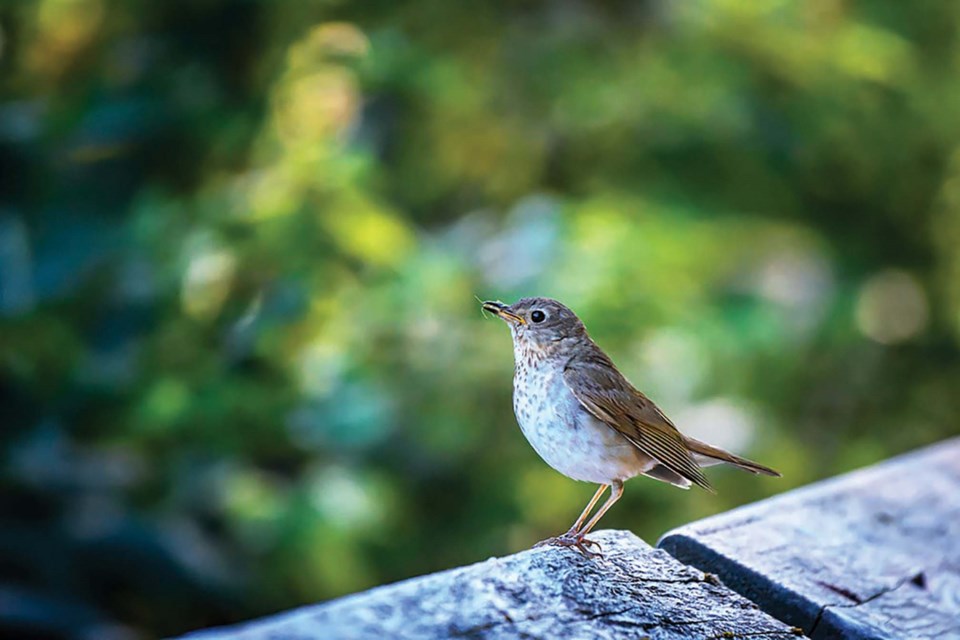This column harped on the prevailing cool temperatures during April that delayed the arrival of migrant birds from the south. Then, suddenly in the last three days of the month, a warm front enveloped B.C. and the mercury rose from the low teens to above 20C for the first time. It was like a magic switch and southern migrants flooded into the area in a tsunami of both new species and sheer numbers. It was the ultimate example of “pent-up” demand, as the migrants, held back by the cool weather, were chafing at the bit to move northward and begin the biological imperatives of the breeding season: to find a mate, a territory and raise a family. Species that suddenly appeared on the Sunshine Coast included representatives of various families including cinnamon teal, least and spotted sandpipers, Pacific-slope, Hammond’s, and olive-sided flycatchers, Vaux’s swift, rough-winged swallow, and Wilson’s warbler. Even more notable was the arrival of warbling vireos, western tanagers and black-headed grosbeaks, all species that often only appear in the first days of May. Within a three-day period, we moved from a situation of a late migration to an early one!
One of the more obvious features of springtime, even to non-birders, is the northward flight of the geese. Between the first flock on April 4 and the last on May 4, many thousands of birds flew over the Sunshine Coast to their northern breeding locations. We shall see them again, flying south, from mid-October.
Migration seasons always bring a tiny number of unexpected visitors to our area. Individuals, for various reasons, take a slightly different route to normal, usually by wandering farther west. This was the case on May 2, when Mari Petznek photographed a Baird’s sandpiper at the Wilson Creek estuary. This bird is a very uncommon fall migrant to the Sunshine Coast in August, and this was the first ever spring record of the species. Other uncommon species reported were vesper sparrow and a yellow-headed blackbird which spent a few days in the Sechelt Marsh.
A bird walk, part of an Eldercollege program on May 8, produced the first report of a Swainson’s thrush. Swainson’s arrives from central and South America, and is one of our commonest birds through the summer. Most people will only hear its song, which is the dominant evening song on the Sunshine Coast from late May to early July. It is “the sound of summer on the Sunshine Coast”. Despite being so common, the bird is a skulker in the underbrush and is rarely seen by most people.
To report your sightings or questions contact [email protected] or 885-5539. Good Birding.



